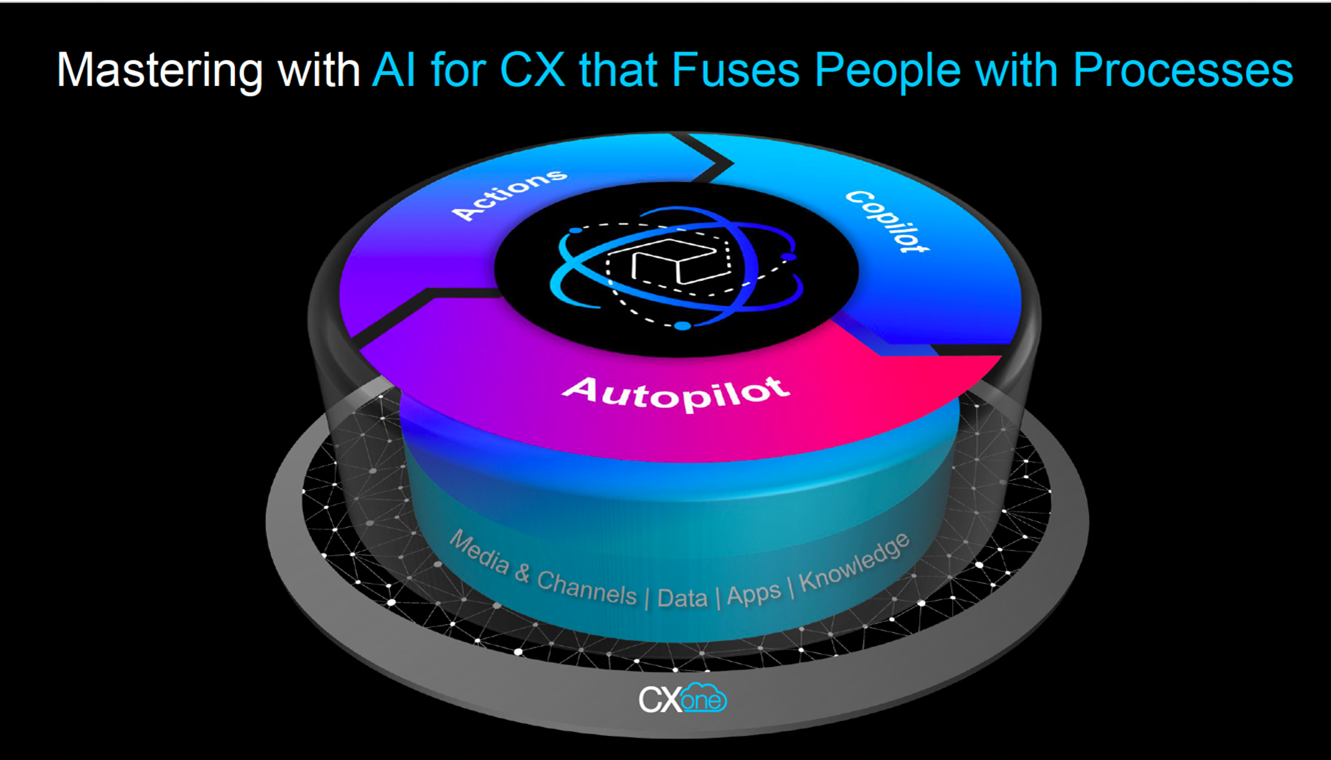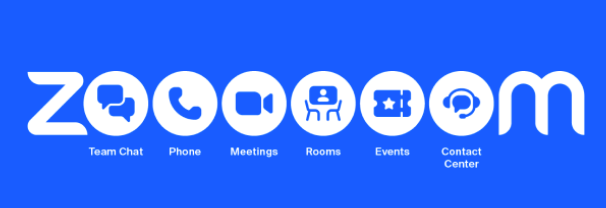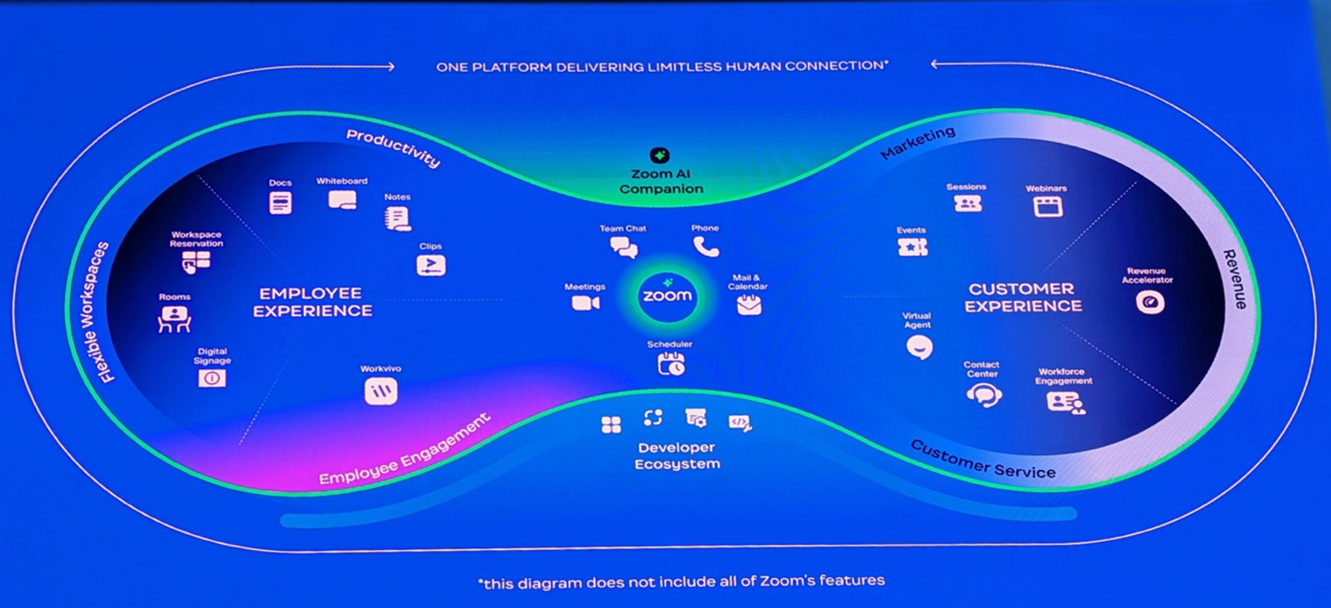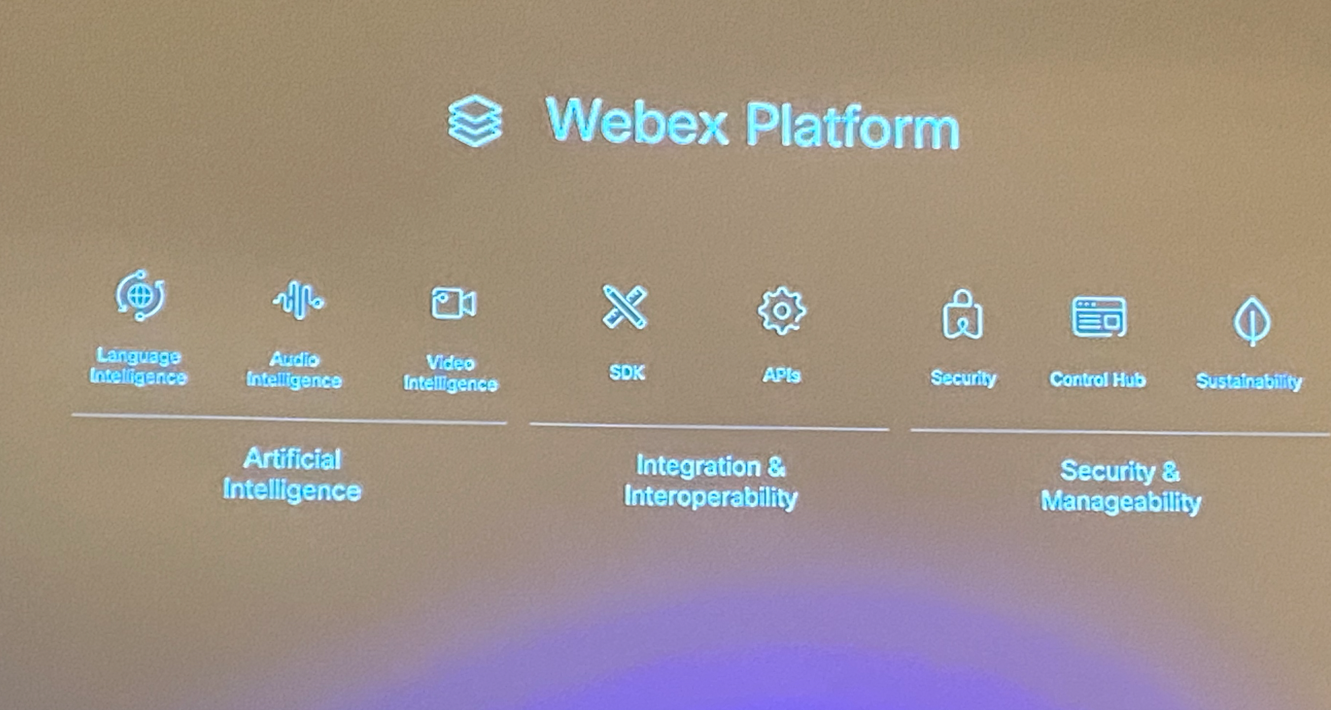Three Conferences – Three Similar Themes
During the month of October I attended three different industry/analyst conferences – Zoomtopia, NICE Industry Analyst Summit, and Cisco WebexOne. I quickly noticed several similar themes at these conferences:
- Contact center/CX takes center stage
- AI assistants, copilots, companions are here
- Focus on a platform
Zoomtopia and Cisco WebexOne had many similarities: both were customer-focused events with special sessions and briefings for analysts, including Q&A with the company executives, and both events also showcased their platform’s event capabilities by demonstrating ways both in-person and remote participants could engage with each event. The NICE Industry Analyst Summit was solely for industry analysts (held in the beautiful Sacred Valley of Peru).
Despite the different intended audiences, there were several similarities and recurring themes at each of these events.
Contact Center/CX Took Center Stage
Each of these vendors took a different path to the contact center market: While NICE is a pure-play contact center/CX vendor, Zoom had been primarily a unified communications and collaboration (UCC) vendor with its origins in meetings and video conferencing, while Cisco’s origins were in networking before it branched out many years ago to become a leading UCC vendor. Both Cisco and Zoom recently introduced new contact center/CCaaS solutions as part of their expanding platform solutions.
Of course, one would expect the main topic of discussion at NICE’s event to be contact centers and CX, but it was interesting to see Cisco and Zoom emphasizing these products at their events, including on the big stage during the conference keynotes. Both companies have introduced new contact center/CCaaS offerings in the past few years, enhancing their capabilities through acquisitions and expanded resources.
Unified communications technologies have become somewhat commoditized, with Microsoft Teams taking a leading position in the market. In order to stay competitive while meeting customers’ growing needs, most UCC vendors have introduced contact center and CX solutions, highlighting the benefits of having a single vendor and platform for both UCC and contact center.
Cisco, which has been offering contact center solutions for many years, to varying degrees of success, rebuilt and relaunched a new cloud-based solution in 2020. Zoom was a bit later to the game, as it introduced Zoom Contact Center in February 2022, but has made significant headway since that time, adding more than 600 new features and functions since its introduction. Both Cisco and Zoom are quickly adding capabilities to their contact center portfolios, with Zoom adding new workforce engagement management capabilities, and Cisco adding the new Webex Customer Experience Essentials, enabling customer-facing teams of any size to have contact center capabilities.
NICE has grown from its roots as a workforce optimization (WFO) and workforce engagement management (WEM) vendor to become a leading CCaaS provider, and more recently to an interactions-centric cloud platform and customer experience (CX) provider.
All three vendors have been honing their AI skills and adding a range of AI capabilities to their contact center portfolios.
Cisco and Zoom have a way to go before they can come close to NICE’s fully-featured offering or customer base, as NICE is considered by most analysts and industry reports to be the leading CCaaS provider. That being said, it was good to see the heightened role contact center and CX have taken within both Cisco and Zoom - and the industry in general.
AI Assistants, Copilots, and Companions are Here
There’s no denying the atmospheric rise in the use and development of AI, for both general UCC and contact center solutions. Thanks to generative AI, we’re moving to a new generation of AI, highlighted by “copilots,” which - contrary to popular belief - is not just a Microsoft offering, but a general term describing software programs that use AI to assist humans with their work. AI copilots can be used in a variety of ways, as they can generate and edit text, suggest ideas, generate code, and much more.
Microsoft was the first out of the gate when it introduced the Microsoft 365 Copilot in March 2023. This was just the first product in a year filled with them -- Cisco introduced Webex AI Assistant, available across the Cisco portfolio, , which can summarize content and extract insights in meetings, messages, etc. In addition to providing real-time suggestions for creating messages, the Webex AI Assistant’s Change Message Tone feature lets you change the tone of the message to be more positive, professional, joyful, friendly, etc.
Zoom introduced its AI Companion (formerly Zoom IQ), a generative AI digital assistant that works across the Zoom platform for creating meeting summaries, meeting highlights and tasks, chat summaries, drafting chat replies, generating whiteboard ideas, provide real-time feedback and coaching on users’ presentation and meeting skills, and more. It will be available throughout Zoom’s entire platform.
NICE offers several copilot-type offerings aimed at consumers, agents, and CX leaders. Enlighten Actions, Enlighten Copilot, and Enlighten Autopilot combine NICE Enlighten AI with generative AI and large language models (LLMs) to make AI more accessible and humanlike.
- Enlighten Copilot is aimed at contact center/customer service agents to provide conversational knowledge, real-time guidance, task automation, personalized coaching, and brand-specific prompts to promote smarter guided interactions. It provides insights and information to help agents provide the right information to customers in real time.
- Enlighten Autopilot is a customer self-service tool leveraging conversational AI to provide smarter self-service options. It understands context and intent and can engage consumers based on trusted company knowledge to “act as your best and most trusted employee, creating fully personalized experiences."
- Enlighten Actions is aimed at CX leaders, and leverages generative AI with specialized AI models built for the CX industry to “proactively uncover areas for AI-driven optimization and carry out complex automation to accelerate execution for all CX leaders.” It is integrated with generative AI to perform complex analytical operations quickly to help CX leaders understand their operations and take action.
While AI was the hot topic in 2023, AI assistants will be all the rage in 2024. By showcasing their offerings at their respective conferences, NICE, Cisco, and Zoom are all committed to offering customers copilot-types of offerings.
Focus on a Platform Approach
No longer content with point products or even suites of products, many vendors now are highlighting their platform capabilities, making it easier to integrate the vendors’ range of capabilities and applications, while enabling more seamless third-party application integrations.
NICE introduced the term “suiteform” to describe the combination of NICE’s unified suite of applications within the CXone platform. NICE’s suite of applications interwork between themselves natively, along with its open platform that enables third-party applications to be incorporated as if they were native. This suiteform approach eliminates the use of multiple siloed point solutions. NICE’s platform includes CCaaS, workforce engagement management and workforce optimization applications, as well as CX analytics, digital and self-service, orchestration and routing, agent assist, and more, on an open cloud platform with developer tools, APIs, and integrations, as well as a marketplace with 154 third-party applications.
Zoom has been also touting its platform, with CEO Eric Yuan noting that Zoom’s number one goal is to be a collaboration platform, and its biggest opportunity is to leverage its platform for developers to build solutions and vertical applications. With the addition of email, calendaring and scheduling, Zoom ran out of “o’s” to add to its logo and has moved to a new diagram depicting its ever-growing platform of applications, focusing on the employee experience and customer experience.
Similar to Zoom, Cisco has also been adding various functions and capabilities to its platform and to the Webex Suite, which now includes calling, messaging, meetings, whiteboarding, polling, events, webinar, and video messaging. One of the themes at Cisco WebexOne was around the power of the Webex platform. Cisco touted the many advantages of being on a single platform, such as the use of AI capabilities such as noise cancellation to be used across all the Cisco applications and devices.
Cisco talked not just about providing specific AI capabilities, for example, but how it is completely AI-powering the platform. The AI Assistant can be used not just to summarize content in meetings and messages, but also for customer interactions in the contact center. The Webex platform also enables integration and interoperability, offering SDKs and APIs for third-party integration, as well as security and manageability across the platform.
Final Thoughts
The benefit of these general themes around artificial intelligence-powered assistants, platforms-as-the-foundation for all communications needs, and CCaaS as an offer is that each demonstrates where communication services and capabilities are going.
This post is written on behalf of BCStrategies, an industry resource for enterprises, vendors, system integrators, and anyone interested in the growing business communications arena. A supplier of objective information on business communications, BCStrategies is supported by an alliance of leading communication industry advisors, analysts, and consultants who have worked in the various segments of the dynamic business communications market.














